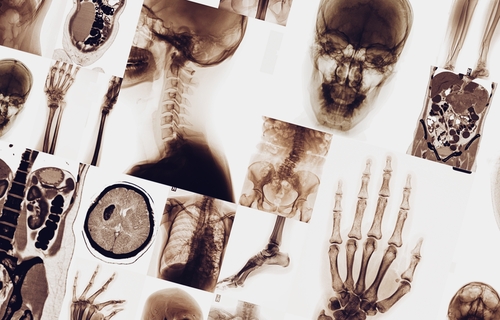Bone Involvement in Sarcoidosis Patients Linked to Multi-organ Disease
Written by |

A large U.S. study found that bone sarcoidosis is more prevalent in white women and is linked to a number of affected organs. According to the authors, these findings can improve the knowledge of bone involvement in sarcoidosis and the methods of detection, as well as help define treatment strategies.
The study, “Clinical characteristics of patients with bone sarcoidosis,” was published in the journal Seminars in Arthritis and Rheumatism.
In many cases, bone sarcoidosis is asymptomatic. The condition can affect between 3 to 5 percent of patients with sarcoidosis, and many cases may remain undiagnosed.
Researchers from the University of Cincinnati Sarcoidosis and Interstitial Lung Disease Clinic diagnosed bone involvement in 64 patients with sarcoidosis from a total of 1,802 patients evaluated, representing 3.4 percent.
Bone evaluation was performed by magnetic resonance imaging (MRI) and positron emission tomography/computed tomography (PET/CT) scanning techniques. Because these scanning methods cannot distinguish between sarcoidosis and malignant lesions, additional bone and bone marrow biopsies were performed. This methodology allowed researchers to diagnose more efficiently and with more specificity bone involvement in sarcoidosis patients.
Overall, the team observed that bone sarcoidosis was more common in white patients and more frequent in females. In total, 38 of the 64 patients (59.4%) had bone symptoms, including pain, reduced exercise capacity, numbness or swelling, suggesting that many patients with diagnosed bone involvement were asymptomatic or showed mild nonspecific symptoms.
The majority of the patients presented spine, pelvis, rib, skull, scapular, sternum, or clavicle lesions. About 55 percent of them had a single-site bone involvement, and the rest had two or more sites involved. Only 30 percent of the patients were diagnosed with hands, femur, or humerus alterations. Hand bone involvement was more prevalent in black patients than in white patients.
Patients with bone sarcoidosis were found to have a higher prevalence of three or more organs involved (multi-organ) than patients with no bone involvement. Indeed, these patients were found to be more likely to develop liver, spleen, or extra-thoracic lymph node involvement than controls (sarcoidosis patients without bone involvement).
The team also found that anemia was more common in bone sarcoidosis patients than in controls.
As for medication, the most commonly prescribed drug was prednisone (sold under several brand names), followed by methotrexate (Rheumatrex, Trexall), hydroxychloroquine (Plaquenil), and infliximab (Remicade, Inflectra).
Infliximab was more commonly administered in patients with bone sarcoidosis compared to controls. However, there were no prescription differences between those with or without bone symptoms.
“Bone sarcoidosis was more common in white and female patients,” the team concluded. “Bone involvement was associated with multi-organ disease. Because of the chronic nature of bone involvement and the investigator’s experience, we propose that treatment with infliximab should be strongly considered for those patients with aggressive and refractory bone sarcoidosis who have failed in first- or second-line therapy.”
In addition, the researchers emphasized, “It is very likely that bone sarcoidosis may be underestimated. In our study, nearly half of bone sarcoidosis patients were asymptomatic or presented with mild nonspecific symptoms. Although PET/CT scanning was useful in detecting asymptomatic bone lesions, it is not routinely performed in sarcoidosis.”





